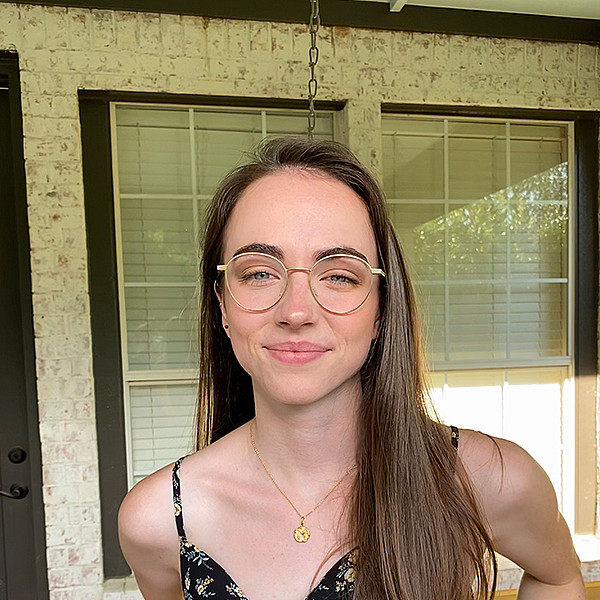News
An Award-Winning Guitarist’s Approach to Teaching
December 17, 2020
December 17, 2020
Open gallery

I was late to my first guitar lesson with Associate Professor of Music Steve Kostelnik. I walked into the Fine Arts Center with plenty of time to spare before 11:00, when the lesson started, but I had forgotten a key factor when planning how long it would take me to walk from my dorm to the building: I had no idea where the classroom was located. Having only been in this particular building for plays and performances, I knew where the theatres were, but I was clueless about how to find the office. Additionally, for social-distancing purposes during the fall semester of COVID-19, there are specific ways one must walk around the building, which only proved to make my journey to Dr. K’s office even more confusing. Nevertheless, I made it to my destination as soon as the student before was leaving the room.
Thankfully, being engaged with that student, he hadn’t noticed my tardiness, but I confessed my confusion of the maze that was the fine arts building, to which he replied with an impromptu tour of the first floor of the building so that I wouldn’t get lost again. That was my first intimation that Dr. Kostelnik was not like other professors.
“Let there be ROCK!”
“Teaching for me is getting rid of variables. It’s just my personality. I’ve always had energy to burn,” Kostelnik chuckles, “always been fast, [and] wanted to get things quickly.” Part of that efficiency is showing students the ropes so they’ll know how to move forward quicker; for me, it was not being comfortable in my surroundings the first day, so he solved that problem by showing me around.
This thought process also applies to how he teaches guitar: he points out the pothole before you fall in. “[Some] trials I’m just trying to make sure you avoid,” Kostelnik explains. “‘Don’t place your feet there, place them here, hold the guitar like this…’ Just pointing it out, and if you’re just stuck, that’s OK, too. Like getting to know the person.” He mentions that his overexcitability can sometimes become a barrier to novice students picking up the guitar for the first time. But once he gets to know what kind of student is walking through his door, he can offer a more personalized approach to teaching. “I want to be able to reach that person and get them to understand something,” he says.
For Dr. K, that means getting to know the person behind the student. When someone comes into his office and he asks how they’re doing, it’s not in an offhand way. Dr. K truly cares about their answer, and if they’re having a bad day, then he’s there to help. “There’s always a bigger thing going on other than guitar. It doesn’t feel right to try to do a whole lesson right then when they need something more,” Kostelnik says. “Helping people out, or just listening—that’s my job as your teacher.”
It’s one of the best parts of Southwestern: The teachers are in a position to help the students more than just instructing them how to do taxes or polynomials. They aim to build a relationship of trust and communication because they want us to succeed in life as well as our career. For me, to learn with a professor who cares about me as a whole and not just for how well I play the guitar was indicative of the kind of education I want to receive at Southwestern.
“Someday we’ll find it, the rainbow connection”
Of course, this wasn’t always Kostelnik’s approach to teaching guitar. When Kostelnik started teaching, his background was hardcore, to say the least. He had won the Naxos prize in the Guitar Foundation of America competition in 1996, released a highly acclaimed debut recording, won first prizes in music and guitar competitions, and was working toward his doctorate, practicing four to six hours a day. Kostelnik came to Southwestern in 2002 and began teaching students slightly more advanced then beginners but quickly found that not everyone had his knack for naturally playing the guitar. “I’d expect them to do things like me. And I’d come back and say, ‘Wait a minute… Why don’t you get this?” Kostelnik smile-frowns while remembering his bewilderment at previous students. “It took me a while to figure that out: why am I not getting the results I expect?”
It turned out to be a student who would later help him with figuring out his approach to teaching. “I remember one time, Jessica, a student who was with me all four years she attended SU, said, ‘Tell me where that [note] is’ in this way that was so blunt,” Kostelnik smiles. “I had this thought that I wasn’t exactly supposed to tell them exactly what to do, just tell them how to do it, which is good, but sometimes you just need to tell them, ‘No, it’s right there.’” He pauses and smiles as he remembers that enlightening lesson—how his student taught him how to teach in that moment. Now, if he wants the student to put a finger on a specific string or sit straighter to better hold the guitar, just telling them bluntly is sometimes the easiest method.
Kostelnik acknowledges that having specialized musical expertise and experience is important. “Having all of this [guitar] information and all the specific knowledge that you know you’re absolutely right about is there in the background,” Kostelnik elaborates. But simply being open to students’ needs and questions about the material is also key to successful teaching. The focus of each lesson becomes one easy thing to learn that could be applied to any piece of music. It’s a process that continually builds off previous knowledge until you’ve gotten that new ability down. And it works for any type of learning, whether you’re moving from musical scales to performing an entire song, transitioning from crawling and walking to running, or going from sounding out the alphabet to reading a novel.
‘Lean on me… when you’re not strong”
This line of thought brought Dr. K to his philosophy of teaching. “In a nutshell, it’s a mentorship relationship,” Kostelnik states. He explains that the mentorship model is not simply telling a student to do something and they do it, end of conversation. Kostelnik believes it’s more of an engaging process learning how to play music. It’s a professor’s job to help, so whatever a student needs, he’s willing to give. It goes back to him treating his students as people who have bigger stressors than learning guitar. “I care about you and being able to get results,” says Kostelnik. “In learning the guitar, I want you to remember exactly the steps we did and for you to do them to the best of your ability.” Those steps might be first knowing how to sit and hold a classical guitar, then learning what strings are what notes or how those notes correspond to dots on a sheet of music, and finally understanding how those aspects make up a song. “When you do that, it won’t be perfect, but you’ll make some sort of progress. Then, [when] you come back, we do it all again, and we learn through that process,” Kostelnik says. “That’s what the mentorship relationship is.”
Of course, students are the ones doing all the learning, so he’s there to help them along in whatever way they need or want, whether that’s backing off to let them practice or blatantly giving them instructions, but they do need to collaborate in that process by speaking up. “I don’t necessarily know what you need, so ask. It’s that simple,” Kostelnik suggests. Developing that comfort in articulating how they want to learn is why he prefers to get to know his students closely. “When there aren’t as many barriers, then they’ll be able to talk to me to work out a process that works for us both,” Kostelnik remarks. The mentorship model works because once the mentor and mentee are working together—in this case, to learn guitar—there’s a level of trust associated with the process. “That’s actually a pretty big vote of confidence when a student will literally do something you asked them to do. They don’t even know if [what I say] will work with that piece of music, so they have to take a leap of faith,” Kostelnik says. Once they do, they usually find it was worth it.
“Hey, Jude… don’t be afraid”
When asked what piece of advice he’d like to give to students learning to play an instrument, Kostelnik pauses thoughtfully. “It might have something to do with fear and with not being afraid,” he starts. “When you come in and you first meet me, you can’t help but feel a little bit uncomfortable or [have a] fear of failure because of the situation.” So he encourages students to simply show what they don’t know so he knows how to teach them. “If you’re going to make a mistake, make a big one. I want you to try to play this [piece of music] and go for it and pay attention to what you don’t know. If you play it and it comes out just like you wanted it to, cool. If you play it and it comes out wrong, even better!” Kostelnik exclaims. “You know you were wrong, and you can know in what way you were wrong, so you can learn how to play it right. Always show what you don’t know.”
“Go for it! Screw up, do it again, keep messing up until you get it right.”
The flip side of not being afraid to show what you don’t know is that many times, people pretend that they know everything. Maybe that’s because of how we were conditioned through school at an early age to always have the right answer and always have it first, but that’s not reality, he says. Reality is realizing that you’re not supposed to know everything about everything. “You’re supposed to try and give your honest effort, and if you’re wrong about something, then awesome!” Kostelnik emphasizes. Being wrong about whatever you’re learning—and this goes for more than just playing the guitar—is the key to questioning and then understanding it. “Don’t be afraid to fail in my presence when I tell you to play something,” he advises. “Go for it! Screw up, do it again, [and] keep messing up until you get it right.”
















